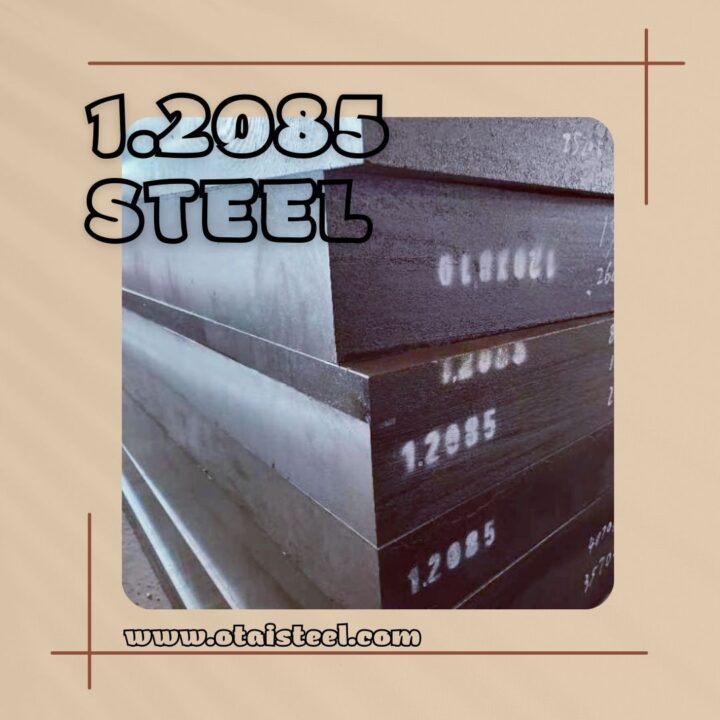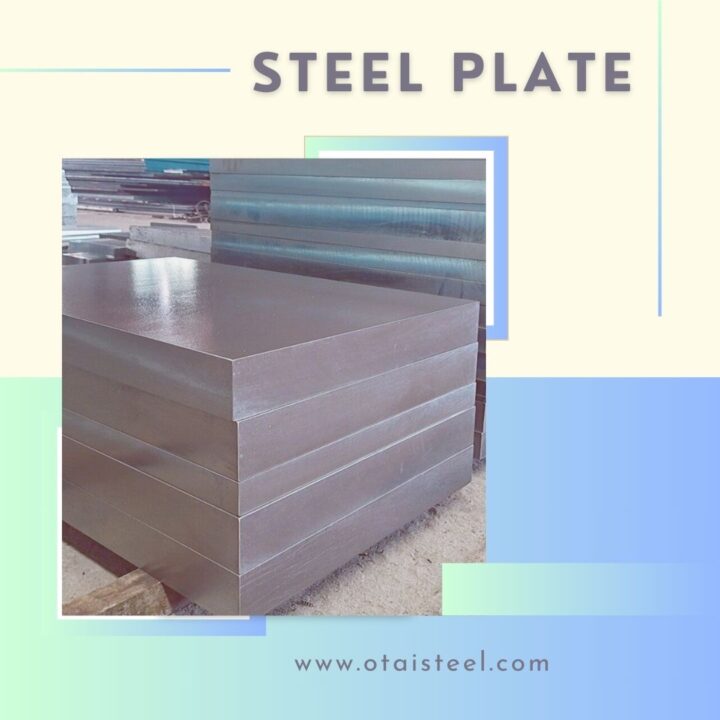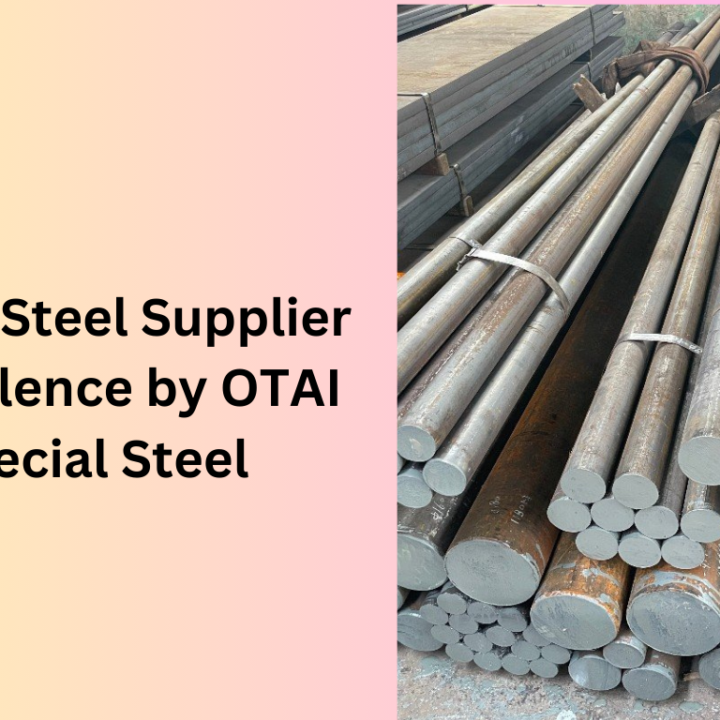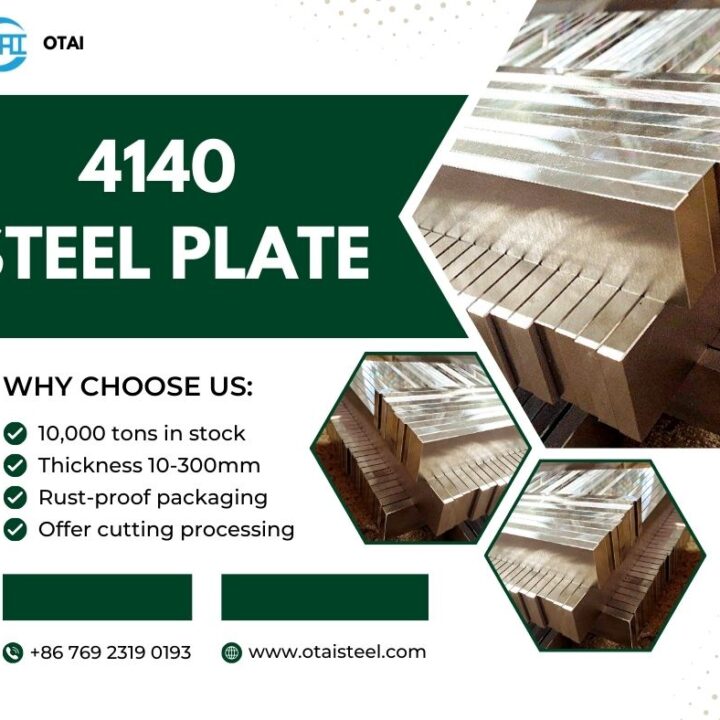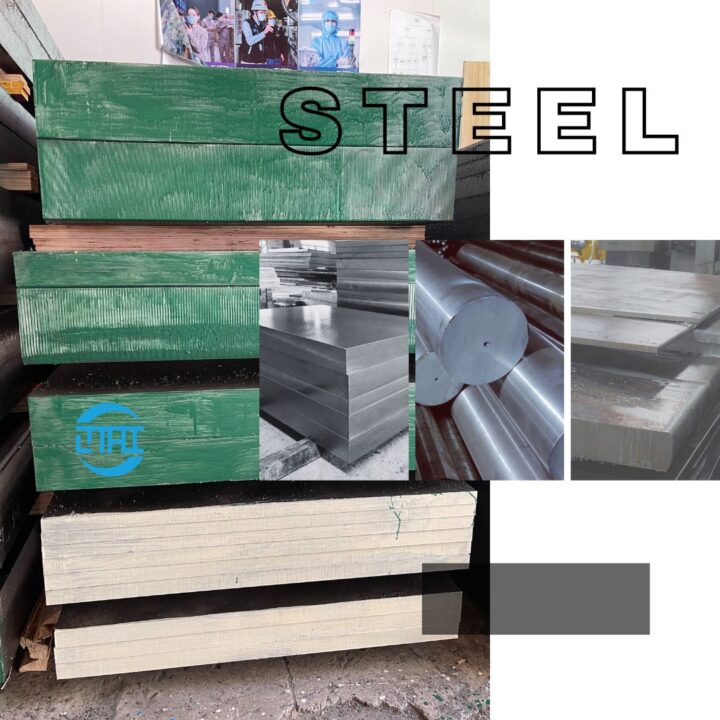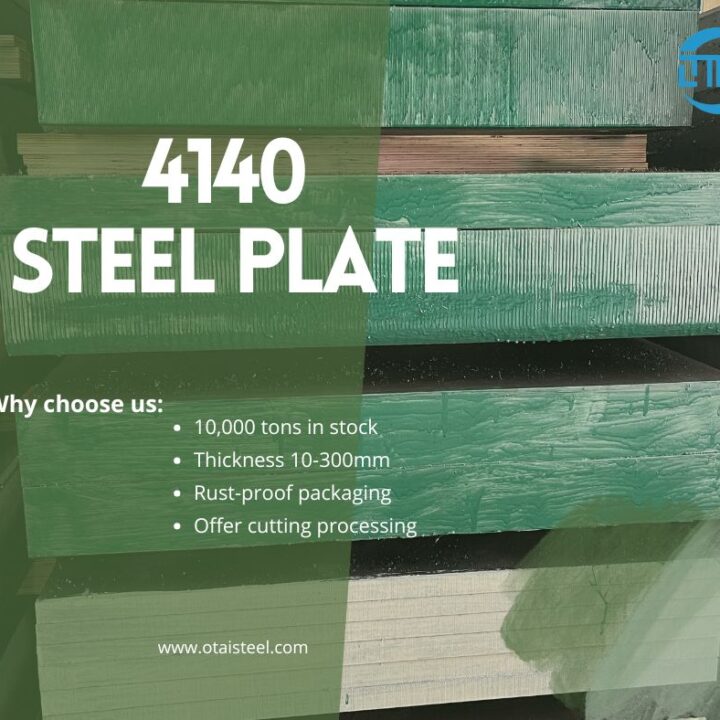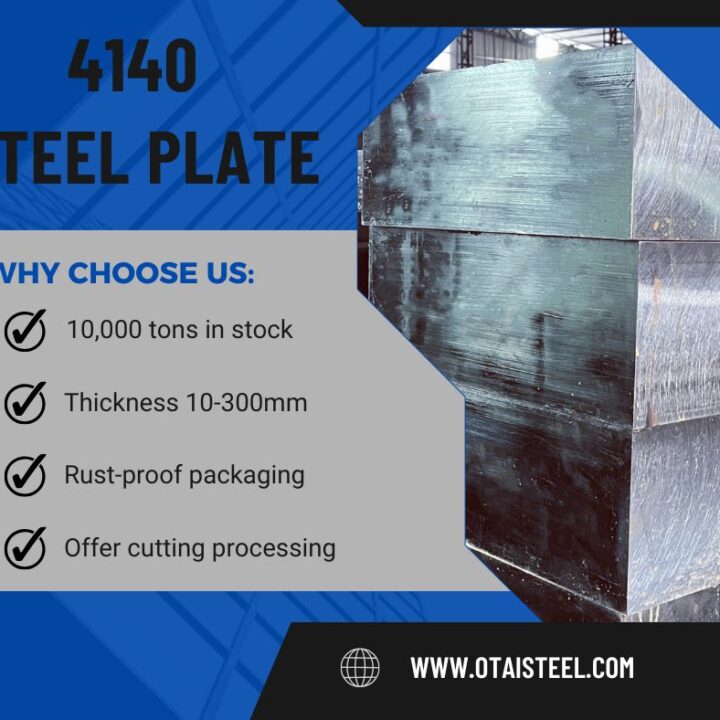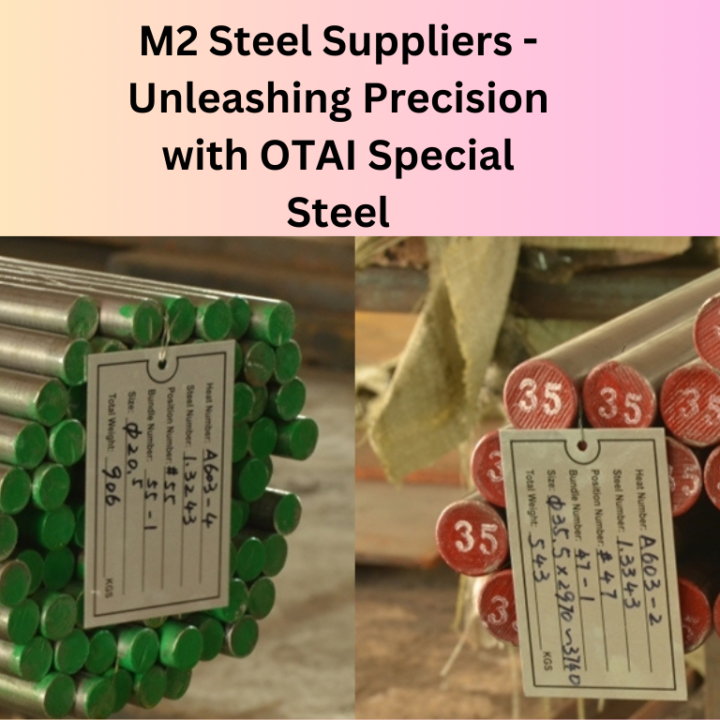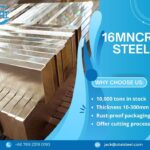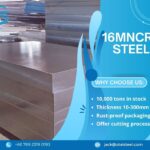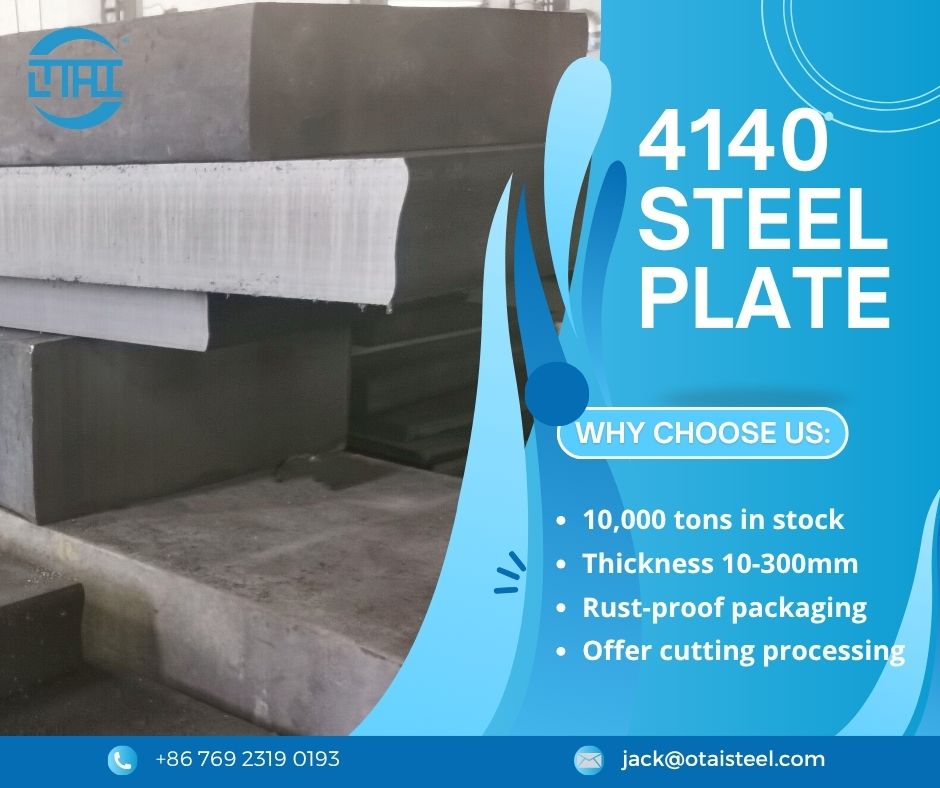 4140 Steel Equivalent ASTM: A Comprehensive Guide to Understanding ASTM Standards
4140 Steel Equivalent ASTM: A Comprehensive Guide to Understanding ASTM Standards
4140 steel is one of the most widely used alloy steels in the world, known for its excellent strength, toughness, and wear resistance. It is particularly valued for applications that require high impact resistance, fatigue strength, and hardness. However, when sourcing steel for specific projects or applications, it’s essential to understand the equivalents of 4140 steel according to ASTM standards.
In this article, we will explore the ASTM equivalent grades to 4140 steel, helping you understand the alternatives, and making it easier to select the appropriate material for your requirements.
🧪 What Is 4140 Steel?
Before diving into the equivalents, let’s quickly review what makes 4140 steel such a popular choice. 4140 is an alloy steel composed primarily of:
-
Carbon (C): 0.38% – 0.43%
-
Manganese (Mn): 0.60% – 0.90%
-
Chromium (Cr): 0.80% – 1.10%
-
Molybdenum (Mo): 0.15% – 0.25%
This low-alloy steel is recognized for its high tensile strength, good machinability, and excellent fatigue and impact resistance. The steel is often used in a quenched and tempered (QT) condition to further enhance its mechanical properties, making it ideal for applications such as gears, shafts, axles, and heavy-duty machinery components.
🔍 ASTM Equivalent Grades for 4140 Steel
The ASTM (American Society for Testing and Materials) provides a standardized system for classifying materials based on their composition and properties. 4140 steel has a few equivalent grades according to various ASTM standards, which means that other steels may offer similar mechanical properties and performance characteristics. Some of the most common ASTM equivalents to 4140 steel include:
| ASTM Equivalent | Description | Carbon Content | Key Applications |
|---|---|---|---|
| AISI 4130 | A medium carbon, low alloy steel with similar strength to 4140. | 0.28% – 0.33% | Aircraft components, automotive parts |
| AISI 4142 | A higher alloy version of 4140, offering improved hardenability. | 0.38% – 0.43% | Heavy-duty industrial components, shafts |
| AISI 4340 | A high-strength, low alloy steel offering better toughness than 4140. | 0.38% – 0.43% | Aircraft, automotive, and heavy machinery |
| SAE 1030 | A medium carbon steel with comparable tensile strength to 4140. | 0.28% – 0.33% | Gear components, axles |
| SAE 8620 | A low alloy steel with similar mechanical properties to 4140 when carburized. | 0.18% – 0.23% | Gears, shafts, and automotive parts |
As you can see, several ASTM equivalents of 4140 steel exist, each with slight variations in carbon content and alloying elements. These equivalents offer different benefits depending on the specific requirements of the application.
🧬 Key Differences Between 4140 and Its Equivalents
While 4140 steel shares several properties with its ASTM equivalents, subtle differences can influence which material you choose for your application. Let’s break down some of the key characteristics of 4140 steel and its equivalents:
| Steel Type | Carbon Content | Tensile Strength | Hardness | Applications |
|---|---|---|---|---|
| 4140 Steel | 0.38% – 0.43% | 95 – 110 KSI (655 – 758 MPa) | 28 – 32 HRC | Gears, shafts, axles, tools |
| AISI 4130 | 0.28% – 0.33% | 85 – 100 KSI (586 – 689 MPa) | 22 – 26 HRC | Aircraft, automotive, machinery parts |
| AISI 4142 | 0.38% – 0.43% | 100 – 110 KSI (689 – 758 MPa) | 30 – 34 HRC | Heavy-duty industrial components |
| AISI 4340 | 0.38% – 0.43% | 120 – 150 KSI (827 – 1034 MPa) | 32 – 36 HRC | Aircraft, automotive, heavy machinery |
| SAE 1030 | 0.28% – 0.33% | 80 – 95 KSI (552 – 655 MPa) | 20 – 24 HRC | Axles, shafts, gears |
| SAE 8620 | 0.18% – 0.23% | 90 – 100 KSI (621 – 689 MPa) | 30 – 34 HRC | Carburized gears, shafts |
-
AISI 4130: Has a slightly lower carbon content than 4140, which can result in lower tensile strength. It is often used in aerospace applications where weight is a critical factor, and strength requirements are slightly lower.
-
AISI 4340: Offers significantly higher tensile strength compared to 4140, making it a good choice for aircraft components and other high-performance applications.
-
SAE 8620: While lower in carbon content, SAE 8620 is often carburized to improve its surface hardness, making it suitable for applications that require hard wear surfaces without the need for high core strength.
🏗️ Choosing the Right Equivalent for Your Application
The right choice of steel depends on the specific demands of your application. Here are some guidelines to help you select the most suitable material:
-
For Heavy-Duty Industrial Applications: If your components require excellent wear resistance and impact strength, AISI 4140 and AISI 4142 are both strong contenders.
-
For Aircraft Components: If you’re looking for lightweight yet strong material, AISI 4130 offers a lower carbon content, making it suitable for aerospace applications.
-
For High-Strength Components: If you need high tensile strength and toughness, AISI 4340 is an excellent option, especially in automotive and high-performance machinery.
-
For Gear Components: SAE 8620 is ideal for applications where the material will undergo carburizing to create a hard surface layer, making it perfect for gears and shafts.
🏅 Why Choose Otai Special Steel for Your 4140 Steel Requirements?
At Otai Special Steel, we provide high-quality 4140 steel and its equivalents to meet your exact specifications. Here’s why we stand out:
| Feature | Details |
|---|---|
| Competitive Pricing | We offer affordable pricing without compromising quality. |
| Customization Options | We provide cutting, heat treatment, and other services. |
| Global Shipping | Fast and reliable delivery worldwide. |
| Quality Assurance | Rigorous quality control ensures top-notch products. |
Our wide range of steel options, combined with customization services, ensures that we can meet your unique engineering needs with precision and reliability.
❓ FAQ: Frequently Asked Questions
Q1: What is the main difference between 4140 and 4340 steel?
A1: AISI 4340 has a higher tensile strength and toughness compared to 4140, making it suitable for more demanding applications like aerospace and high-performance machinery. 4140 is ideal for standard industrial applications.
Q2: Can I use AISI 4130 as a substitute for 4140 steel?
A2: AISI 4130 has lower carbon content and slightly less strength than 4140, but it is a good alternative for lighter applications such as aerospace or automotive parts that don’t require the extreme strength of 4140.
Q3: How do I know which steel grade is right for my project?
A3: The choice depends on the strength, hardness, and durability required for your application. 4140 and its equivalents provide a range of properties suitable for different industrial and aerospace applications.

